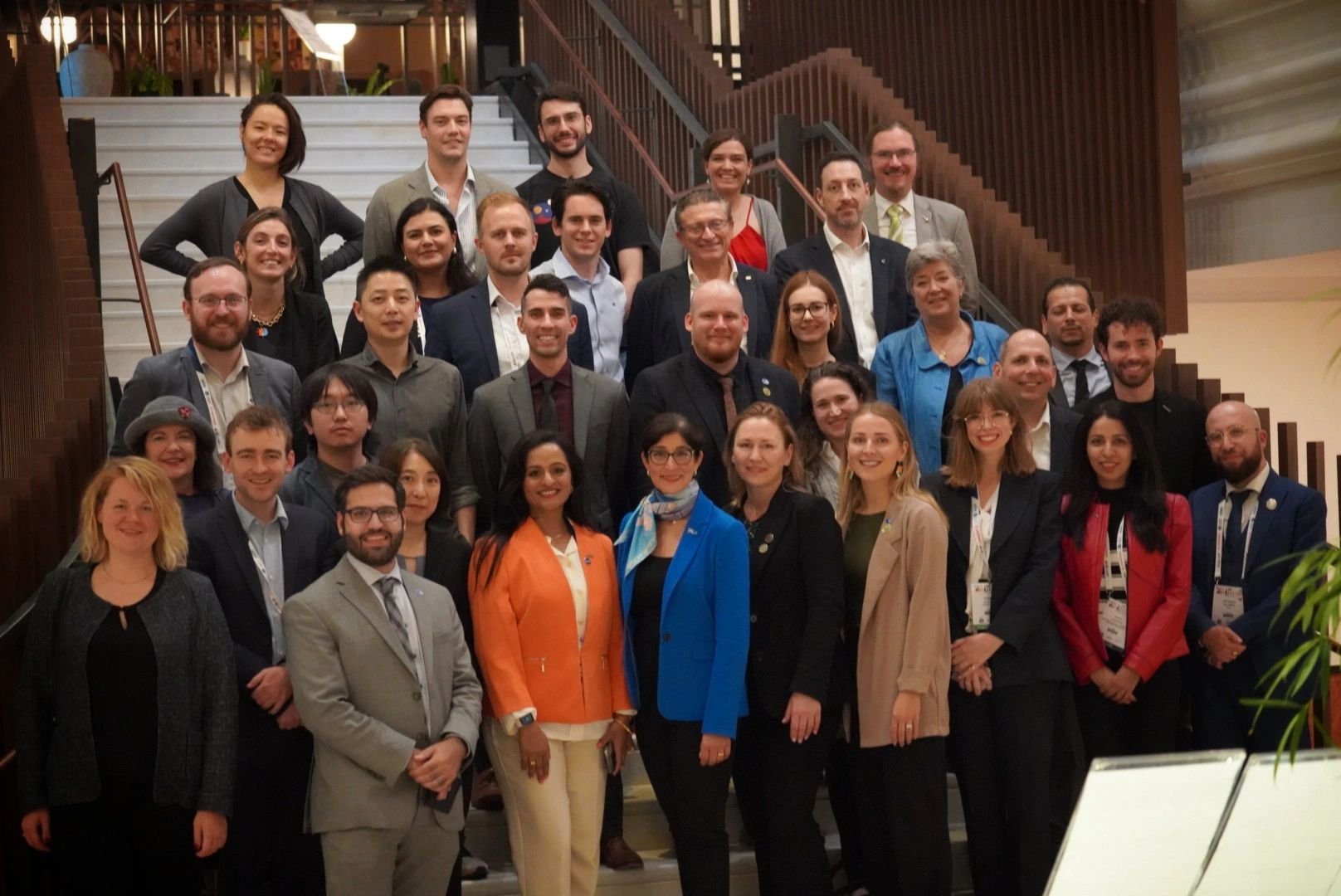2024 Lunar Registry Stakeholder Engagement: Building a Foundation for Cooperative Exploration
During 2024 Open Lunar engaged over 150 stakeholders to gauge their receptivity and gather valuable feedback to inform the next phase of the Lunar Registry project.
Between July and December 2024, Open Lunar, led by affiliate and fellow Samuel Jardine embarked on a major stakeholder engagement campaign to gather feedback on its Global Registry of Lunar Objects and Activities concept. This built on earlier phases: Phase 1 (2022) produced an in-depth study assessing the Registry’s needs, impact, and risks, while Phase 2 (2023) explored its potential design and implementation.
Phases 1 and 2 revealed that the challenge of creating the Registry was more political than technical. As a result, Phase 3 (2024) focused on direct engagement with key stakeholders worldwide to gain fresh perspectives, gauge interest, and refine the concept so it meets the needs and requirements of operators and stakeholders.
Our outreach strategy utilised two complementary approaches:
We conducted confidential, closed-door interviews with key stakeholders, ensuring anonymity to encourage open and candid discussions. This approach provided unfiltered insights into their perspectives on the Registry and the broader space sector. Our methodology ensured we received perspectives from a diverse range of actors from across the globe.
We convened stakeholders, most notably by hosting a major event on the sidelines of the IAC in collaboration with the Sustainable Markets Initiative, the Karman Project, and UNOOSA.
Our Impact:
We reached 155 stakeholders worldwide, with our outreach-to-engagement conversion rate at 85.16%. Stakeholders from all six inhabited continents and from every segment of the space sector provided invaluable feedback.
We attended two major events—the IAC and the UN Conference on Space Law and Policy—where we engaged key stakeholders in one-on-one and workshop sessions to gather perspectives and raise awareness of the Registry.
A key conference takeaway from the UN Conference on Space Law and Policy was that information sharing is widely considered a critical priority and essential for effective space governance, despite being underdeveloped.
On the sidelines of the IAC, we hosted a workshop with over 35 government, industry, civil society, and scientific stakeholders. Under Chatham House rules, participants freely shared unvarnished thoughts on the Registry’s technical, institutional, and community development aspects.
In the second part of this event, UNOOSA’s Director Aarti Holla-Maini introduced ATLAC to industry actors, promoting their involvement in the proces
Key Takeaways:
While engagement was undertaken with stakeholders under Chatham House rules and a policy of closed-door open discussions, some stakeholders granted permission for us to share their general perspectives anonymously. These have been synthesised below:
1. Stakeholders found it very useful
Stakeholders across government, commercial, science and academia have said they would find the existence of a dedicated Lunar Registry of Objects and Activities highly useful. They note nothing like this exists to their knowledge yet.
2. Stakeholders are keen on a UN-linked Registry created by an NGO
Stakeholders envision a Registry aligned with UNCOPUOS and UNOOSA while developed by an NGO, relying on voluntary engagement. Stakeholders feel this is a natural development to the UN’s existing Registry of Objects Launched into Outer Space and feel the two approaches- seeking UN affiliation and being NGO-advocated are mutually supportive and strengthen the Registry’s legitimacy in both areas.
3. Being apolitical and global is important
Stakeholders were supportive of the Registry being apolitical and global in its outlook, audience, information, and approach. An NGO-based effort would likely be more amenable to stakeholders globally.
4. Registry as a collaborative tool
Stakeholders highlighted the Registry’s aim to collate future missions was highly useful for connecting payloads with launch companies. A process that currently takes significant time
5. A selling point for the Registry is the increasing number of new and unconventional actors putting non-traditional “stuff” on the Moon
Some stakeholders noted that a big risk, and need for information, in the Lunar environment comes from increasing numbers of non-traditional and new actors- not commercial, scientific, or government necessarily, but as costs come down those putting art installations or unorthodox objects on the Moon for which there is no clear framework.
Next Steps:
Building on the overwhelmingly positive feedback from last year’s comprehensive engagement, we’re advancing the Registry this year and inviting our first partnerships and stakeholder submissions. To support this effort, we’re investing in a dedicated team to lead the next phase.
If you’re passionate about fostering a peaceful and cooperative presence on the Moon through collaborative infrastructure, we’d love to have you on board. Check out the role here: https://www.openlunar.org/blog/regprld




